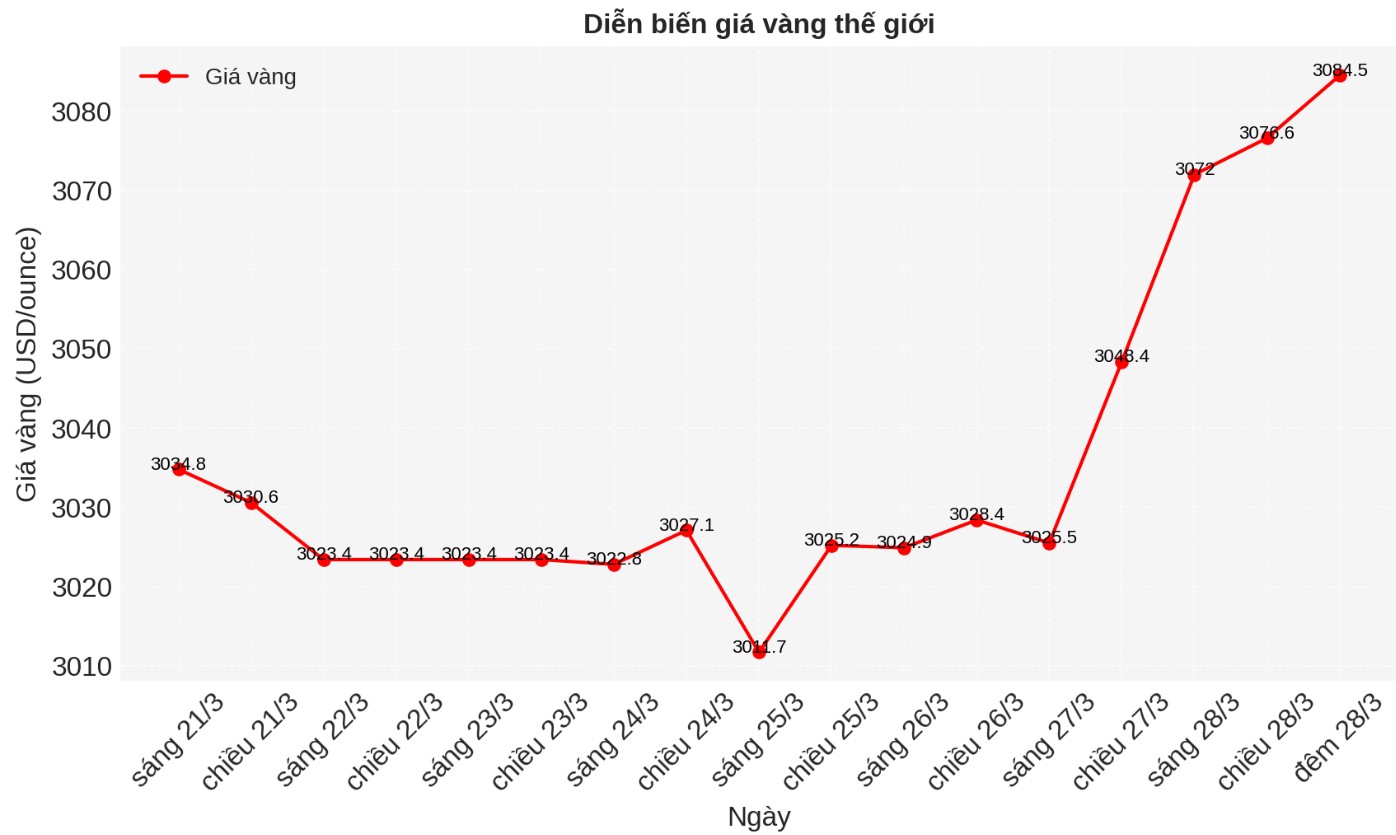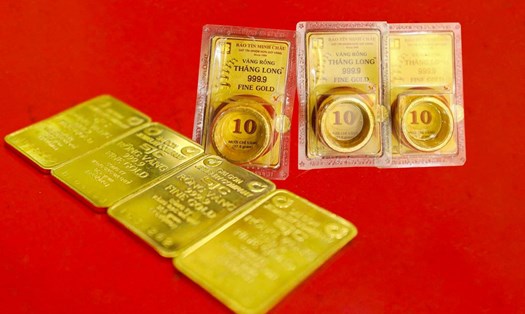Safe-haven demand pushes gold prices to record high
The gold market witnessed a strong price increase in the first quarter of 2025, when gold prices continuously broke the peak. A series of factors, from economic fluctuations, prolonged risks of inflation to increased geopolitical tensions, have created strong momentum for this trend.
The collapse of the ceasefire in the Middle East and the prolonged war situation have increased risk-off sentiment globally. Along with that, the market is also affected by new trade policies, causing investors to turn to gold as an effective defense channel.
Since the beginning of the year, gold has become one of the assets with the strongest growth rate, surpassing both the S&P 500, large technology stocks and Bitcoin. In the first 50 days of the year, gold prices have increased by more than 400 USD, establishing one of the strongest up cycles in history.

The June gold futures on the Comex are currently trading at $3,117/ounce, while the silver futures also surpassed $355. Capital flows into gold ETFs have skyrocketed in the past month, reflecting investors' growing confidence in this precious metal.
One of the main reasons for the sharp increase in gold prices is concerns about prolonged inflation. Over the past five years, prices have risen significantly, with total inflation exceeding 23% according to the CPI - the highest level in more than 30 years in the US. This causes households to face increasing financial pressure as living expenses, from goods to services, all increase.
Last week, the US Federal Reserve (FED) said it forecast GDP growth in 2025 to only 1.7%, while PCE inflation could increase to 2.8%. These figures show that the risk of inflation - an economic state with slow growth but high inflation - could become a reality.
In addition, consumer confidence is also declining. The Conference Board's Expectations Index, which measures personal financial prospects and business performance, has fallen to a 12-year low, signaling greater challenges in the coming period.
Will the drug increase continue?
The US financial market is experiencing significant fluctuations. In March, economic surveys showed a decline in production and service activities.
Many US businesses are also facing major challenges. Uncertainty about trade policies makes it difficult for companies to make long-term plans.
According to a survey by CNBC, many financial directors are concerned about the economic outlook, with the majority believing that the US could fall into recession in the second half of this year.
The growing trade deficit also makes the market worried. The US is importing gold in record volumes, with New York reserves increasing by 25% last month, after increasing by 43% in January. Total gold in COMEX's warehouse is currently at 42.6 million ounces, double the level at the end of 2024.
From a technical analysis perspective, gold prices are in a strong uptrend. After breaking the 13-year cup and handle model above $2,100 an ounce by the end of the first quarter of 2024, gold has continuously reached new highs.
Strong fluctuations in the US stock market, along with concerns about economic recession, are boosting cash flow into gold. While technology stocks with high prices are showing signs of correction, gold and silver mining stocks are recovering strongly.
According to Reuters, gold mining investment funds are attracting the largest capital in more than a year, as gold prices set a new record. Gold mining companies expanding production and increasing profits could create more momentum for the precious metal to increase.
In addition to gold, silver is also showing signs of a breakthrough. After a period of adjustment of 4.5 years, silver prices have now surpassed 35 USD and may move towards 40 USD in the near future. If it closes in March above this level, silver could re-cast its historical peak of $50 by the end of this year.
The gold market is in a strong uptrend, supported by many economic and technical factors. However, investors need to closely monitor market developments to have a suitable strategy, especially in the context of high fluctuations in the global economy.











